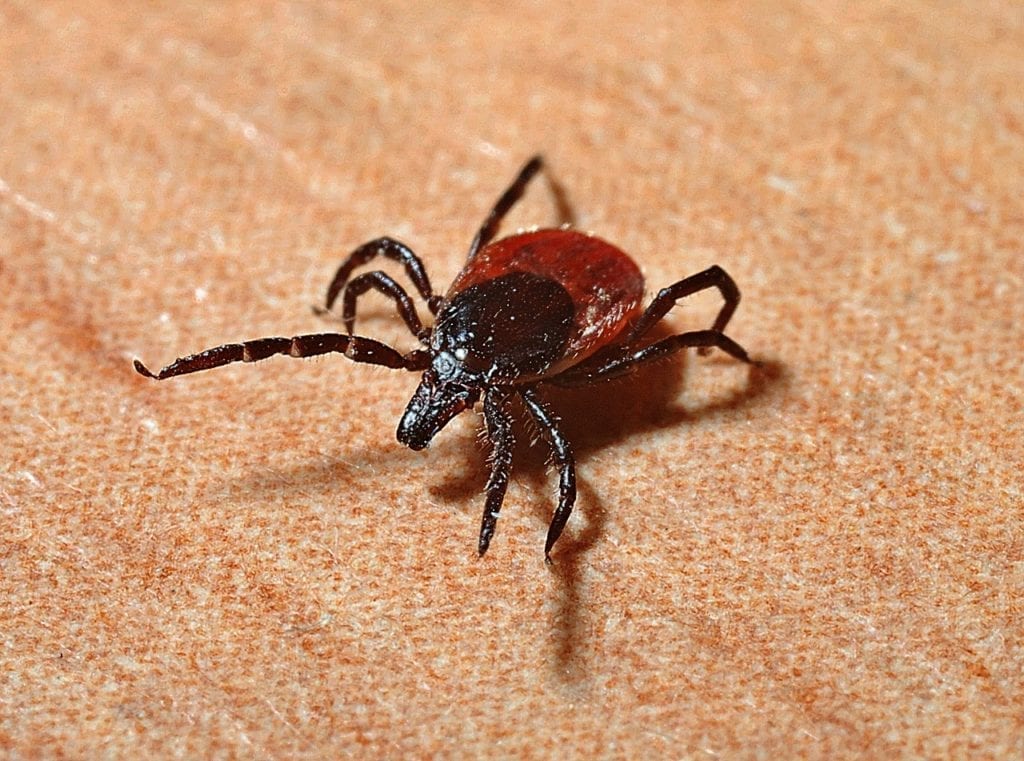Ruby Carr has always loved playing outside. But an enjoyable day in the summer sun turned into chaos after Ruby was unknowingly bitten by a tick. As the tick latched to her scalp, changes rippled through her body. Ruby felt exhausted for a few days; her dad Brian noticed she was just laying around. Then, sudden paralysis hit. Ruby was falling, clumsy, and couldn’t turn her head side-to-side. Markeshia Jackson reports that, after Ruby’s family rushed her to the hospital, doctors diagnosed her with a rare and serious condition called tick paralysis.
In many cases, tick paralysis can be difficult to diagnose. It shares symptoms with conditions like botulism or Guillain-Barre syndrome. The good news, however, is that tick paralysis is rarely fatal. In most cases, symptoms revolve once the full tick (including the head and all parts of its mouth) are removed from the skin. That being said, tick paralysis can weaken the diaphragm. If you are having difficulty breathing, please visit your local emergency room.
Luckily, Ruby is on the road to recovery. Doctors found and removed the tick, and symptoms are expected to resolve quickly. However, the Carr family is now raising awareness of tick paralysis and encouraging other families to be aware of even the tiniest dangers lurking in the woods.
About Tick Paralysis
There are over 40 different ticks that can cause tick paralysis, a disease that causes widespread muscle weakness and numbness. As Dr. Sabrina Felson explains in WebMD:
tick paralysis is most common in the Pacific Northwest, the Rocky Mountain states, and the Southeastern part of the country. The American dog tick, Rocky Mountain wood tick, and Dermacentor ticks are most likely to cause tick paralysis.
This disease can occur in people of all ages. However, it is most commonly seen in children ages eight or younger.
Unlike other tick-borne illnesses like babesiosis, tick paralysis isn’t caused by infectious organisms. Instead, this disease results from a neurotoxin released through the engorged, egg-laden tick’s saliva. The steady neurotoxin release can impact you by causing numbness and tingling that begins in the legs. People with tick paralysis may feel irritated or extremely fatigued. Muscle pain is also common. As the condition progresses, muscle weakness and paralysis extend to the upper extremities. Typically, the paralysis is bilateral (affecting both sides of the body) but it can present unilaterally in rare cases. Without intervention, paralysis can spread to the head, tongue, and neck. Seizures and respiratory failure can occur.
In most cases, tick removal is sufficient to quell symptoms and recover. Some individuals may also require respiratory support.
The best way to avoid tick paralysis is through preventative measures. If you live in regions where this condition occurs, wear long-sleeved clothing, socks, and enclosed shoes while outside. You can also use tick deterring bug spray and pre-treat your outdoor clothes. Finally, if you’ve spent time outdoors, do a thorough tick check once inside.





